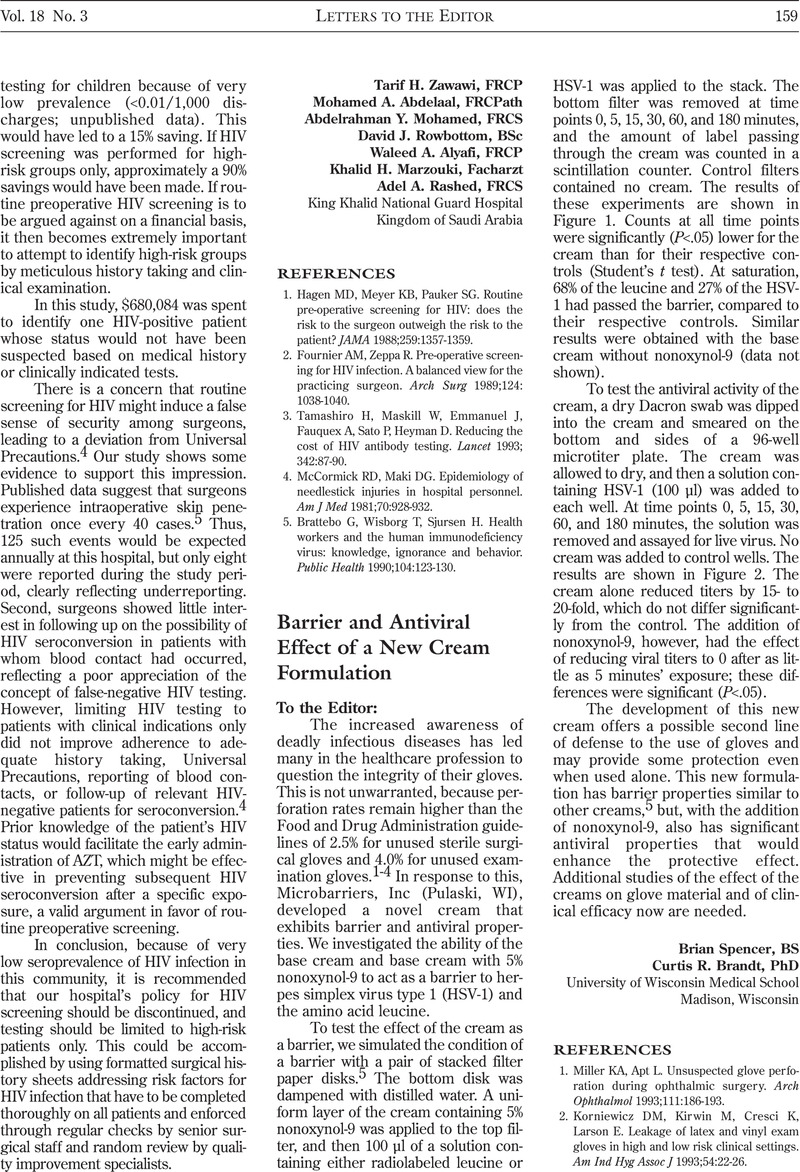No CrossRef data available.
Article contents
Barrier and Antiviral Effect of a New Cream Formulation
Published online by Cambridge University Press: 02 January 2015
Abstract
An abstract is not available for this content so a preview has been provided. As you have access to this content, a full PDF is available via the ‘Save PDF’ action button.

- Type
- Letters to the Editor
- Information
- Copyright
- Copyright © The Society for Healthcare Epidemiology of America 1997
References
1.
Miller, KA, Apt, L. Unsuspected glove perforation during ophthalmic surgery. Arch Ophthalmol
1993;111:186–193.CrossRefGoogle ScholarPubMed
2.
Korniewicz, DM, Kirwin, M, Cresci, K, Larson, E. Leakage of latex and vinyl exam gloves in high and low risk clinical settings. Am Ind Hyg Assoc J
1993;54:22–26.CrossRefGoogle ScholarPubMed
3.
Olsen, RJ, Lynch, P, Coyle, MB, Cummings, J, Bokete, T, Stamm, WE. Examination gloves as barriers to hand contaminations in clinical practice. JAMA
1993;270:350–353.Google Scholar
4.
Jozica, M, Dragas, AZ, Mavsar, B. Virus permeability of protective gloves used in medical practice. Zbl Hyg
1991;191:516–522.Google Scholar
5.
Oz, MC, Newbad, JE, Lemole, GM. Prevention of radioactive indicator and viral particle transmission with an ointment barrier. Infect Control Hosp Epidemiol
1991;12: 93–95.CrossRefGoogle ScholarPubMed


